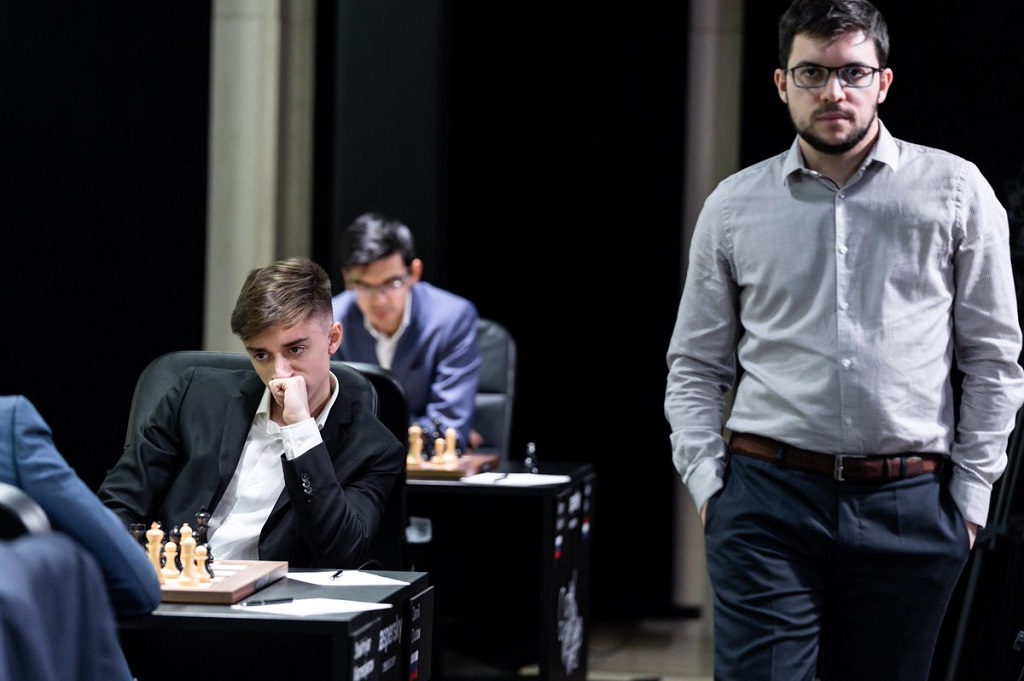


Winning starts with what you know
The new version 18 offers completely new possibilities for chess training and analysis: playing style analysis, search for strategic themes, access to 6 billion Lichess games, player preparation by matching Lichess games, download Chess.com games with built-in API, built-in cloud engine and much more.
Five players made their debut in this year's FIDE Grand Prix, as the second leg of the series began in Riga. Maxime Vachier-Lagrave, Veselin Topalov, Yu Yangyi, Pentala Harikirhsna and David Navara will play in the three remaining stages of the series (including this one), as they were absent from the first event of the year. At the same time, the winner of the Moscow leg, Ian Nepomniachtchi, is one of five players that did participate in Moscow but are not present in the Latvian capital.
As pointed out by Peter Svidler, the players that are participating in Riga after having had a subpar performance in Moscow are already under pressure, as they know that two bad results will pretty much take them out of contention for the two first spots in the series — the winner and the runner-up will receive invitations to next year's Candidates Tournament. Maybe this is why we saw an abundance of fighting chess right from the get go.
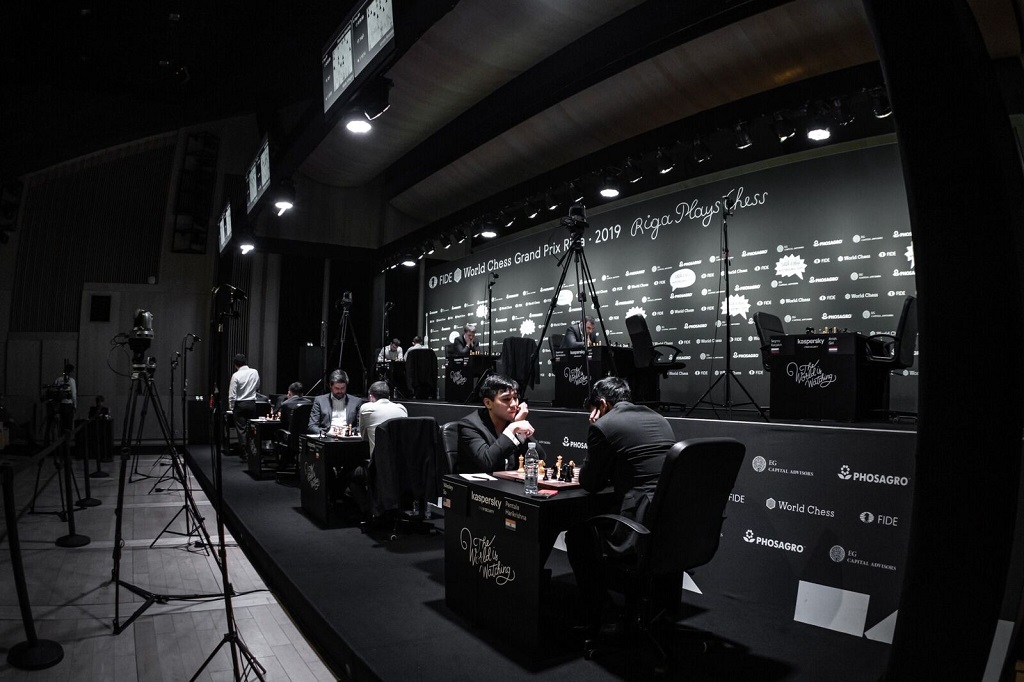
The playing hall in Riga | Photo: Niki Riga / World Chess
After his 19-move loss against Maxime Vachier-Lagrave, David Navara was asked about his strategy to deal with a must-win situation in a knockout tournament — the Czech grandmaster gave a straightforward answer: "In all the World Cups which I have played, I was eliminated because I could not hold [with] the black pieces, basically". The unfortunate trend continued for Navara in Riga, as he faced France's number one with Black.
Out of a Caro-Kann, White went for 9.♕f4 — a move played last year by Vachier-Lagrave's countryman Etienne Bacrot — and Black spent over seventeen minutes on the strategically dubious 9...e5:
Fighting against the Caro-Kann with the Advance Variation
The Caro-Kann Defence is one of the most solid replies for Black after 1.e4. Bologan's choice of the Advance Variation for White is because of the complex strategical play in which White has a long-term space advantage.
The pawn push disconnected Black's bishop from the defence of the king and conceded an important tempo (the same pawn was moved twice in the opening). The computer suggests 9...♝xc3 or a capture on e4 as alternatives. White quickly gave up a pawn to open up some lines for his pair of bishops while Black spent a couple of tempi completing his development.
On move 14, Navara further obstructed his bishop's mobility:
There followed 14...♞c5 15.♗h6 ♞h5 16.♕g4 ♛d6 — Black was trying to deal with the direct threats against his king:
But, although he did manage to stop mate, a forcing sequence simple left White a piece up: 17.♕xh5 ♛xh6 18.♕xh6 gxh6 19.c3
And Black resigned. Navara will need a victory with the white pieces on Saturday to take the match to rapid tiebreaks — a bleak prospect against quick-play specialist Vachier-Lagrave.
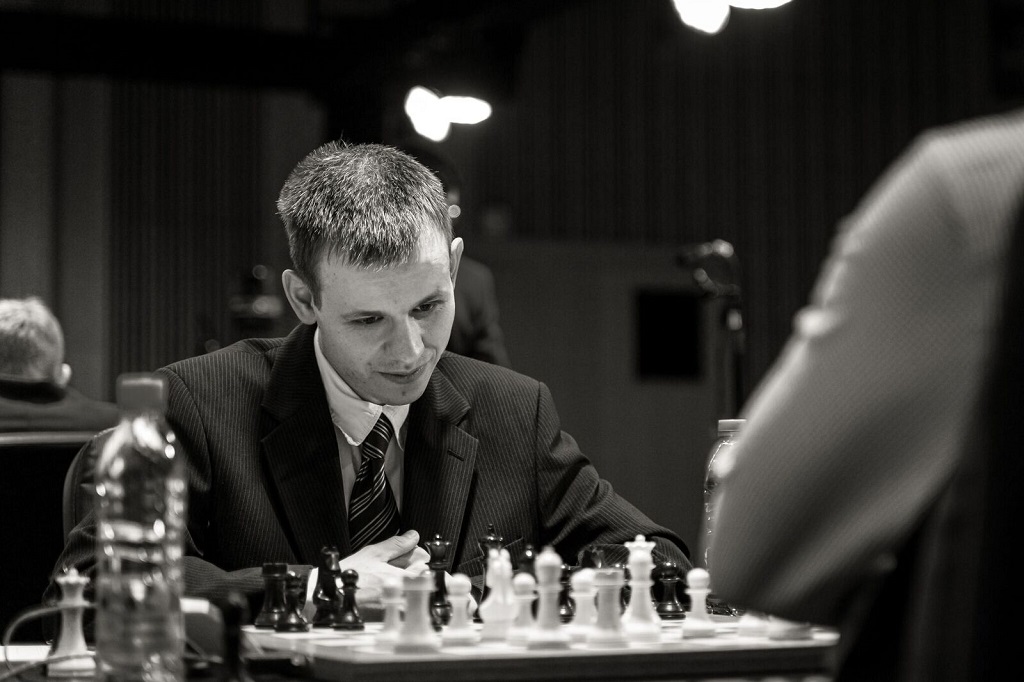
It was a tough start for David Navara | Photo: Niki Riga / World Chess
Apparently, many of the grandmasters that arrived in Latvia consider it to be a good strategy to play riskily right off the bat due to the formats used both in this tournament and in the Grand Prix series as a whole. Either that or they just felt like having some fun at the board.
Peter Svidler had White against Jan-Krszystof Duda, and he was clearly not in the mood to play a slow manoeuvring game:
The Bishop's Opening and The Italian Game
Studying the content of this DVD and adding these openings to your repertoire will provide players with a very strong tool to fight 1...e5 - as the practice of the author clearly demonstrates.
White's 11.♘h4 is actually a novelty, which explains the fact that Duda spent more than fifteen minutes on 11...♞b6 — the best move according to the computer! Black simply allows his opponent to capture with 12.♕xg7 and gives up the rook (with check) after 12...♛f4.
This was certainly a demonstration of good calculation by both contenders! The game continued 13.♕xh8+ ♚e7 14.♘c3 ♛xh4, and none of the kings are at all safe. The players continued to show they can find accurate moves in highly dynamic positions until signing a memorable 42-move draw.
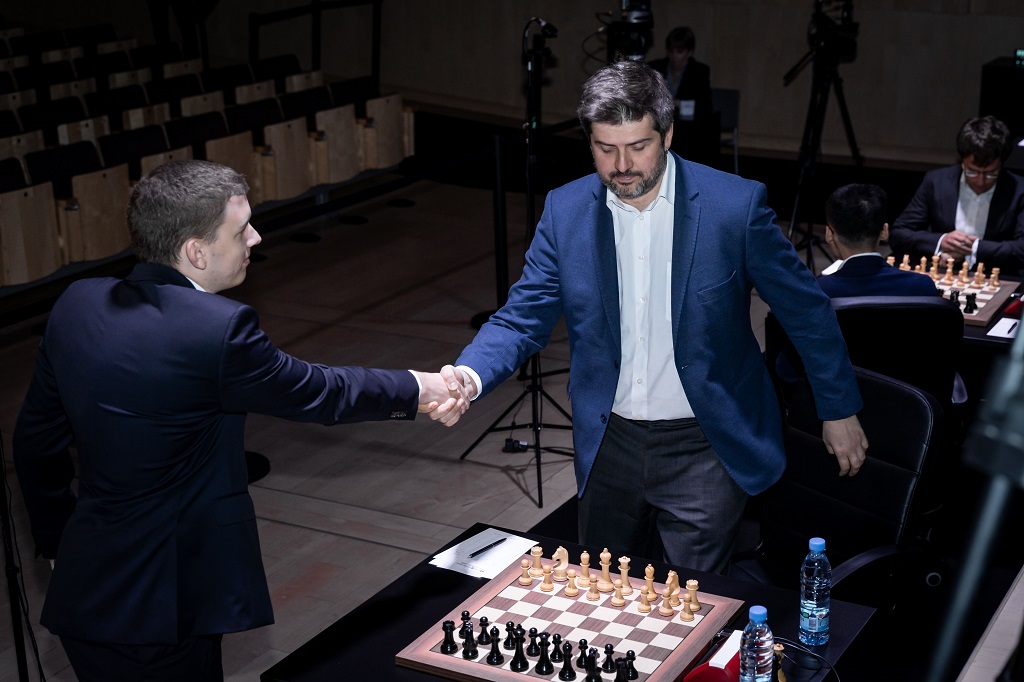
Peter Svidler and Jan-Krzysztof Duda shaking hands | Photo: Niki Riga / World Chess
While Svidler confronted the Polish youngster, two of his closest friends explored a sharp opening line, as Alexander Grischuk decided to take his chances with Black against Nikita Vitiugov. Grischuk had a 'little excuse' for playing so sharply despite the fact that he "[did not] remember anything":
I was in a very good mood before the game because Rausis finally got caught cheating. [...] But it is, you know, dangerous to be in a good mood when playing chess.
Black had his pawn structure completely wrecked but also had a strong initiative against White's king by move 19. At that point, Grischuk made what both players considered to be the best move in the position, although some computers strangely do not see the point immediately and assess it as a mistake:
The Two Knights Defence is one of the oldest opening lines in chess history. This DVD is aimed at players of both sides, giving an objective overview of all relevant theoretical lines.
According to some engines — before reaching certain depth — 19...0-0-0 can be answered by 20.♘xe4, giving White a big edge after 20...♝xe4+ 21.dxe4, but they do not notice that the immediate 20...♛g6, with mate threats against the king, is actually excellent for Black. Vitiugov knew that long castle was good for his opponent and continued with 20.♖h1.
From that point on, Black kept on creating threats but was not able to find the killer blow. Vitiugov defended obstinately until getting a balanced position and eventually getting the draw in a knight endgame.
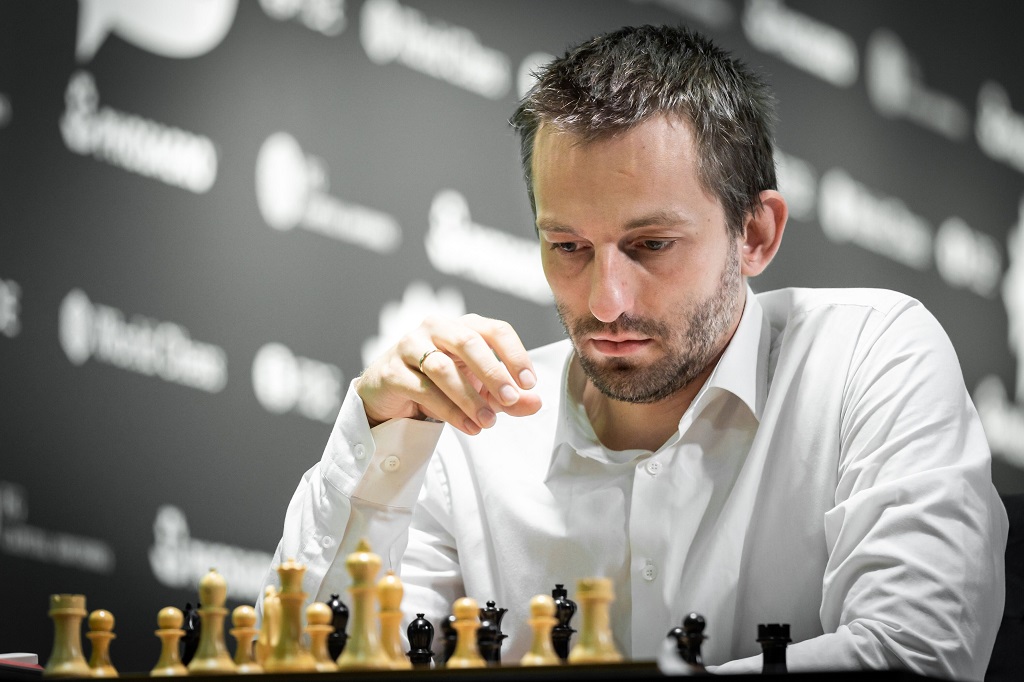
Alexander Grischuk was the runner-up in the first leg played in Moscow, his home town | Photo: Niki Riga / World Chess
Two vulnerable kings were also seen in Shakhriyar Mamedyarov v Daniil Dubov. The Azerbaijani had damaged irreversibly his rival's pawn structure but there was a lot of 'air' surrounding his king, with a particularly obnoxious black pawn fixed on h3.
Suddenly, in the midst of a critical position, Mamedyarov was disturbed by a surprising draw offer:
Are you looking for an active defence against 1.d4? Look no further! The Tarrasch Defence (1.d4 d5 2.c4 e6 3.Nc3 c5) is one of Black's most ambitious ways to meet 1.d4.
The precise way to save the rook was with 25.♖d2, but Mamedyarov later confessed he was dumbfounded by what he considered to be an unjustified draw offer, which prompted him to err with 25.♖c3. From that point on, Dubov found the right manoeuvres to keep the balance (particularly 30...♛d5) and the point was split after 35 moves.
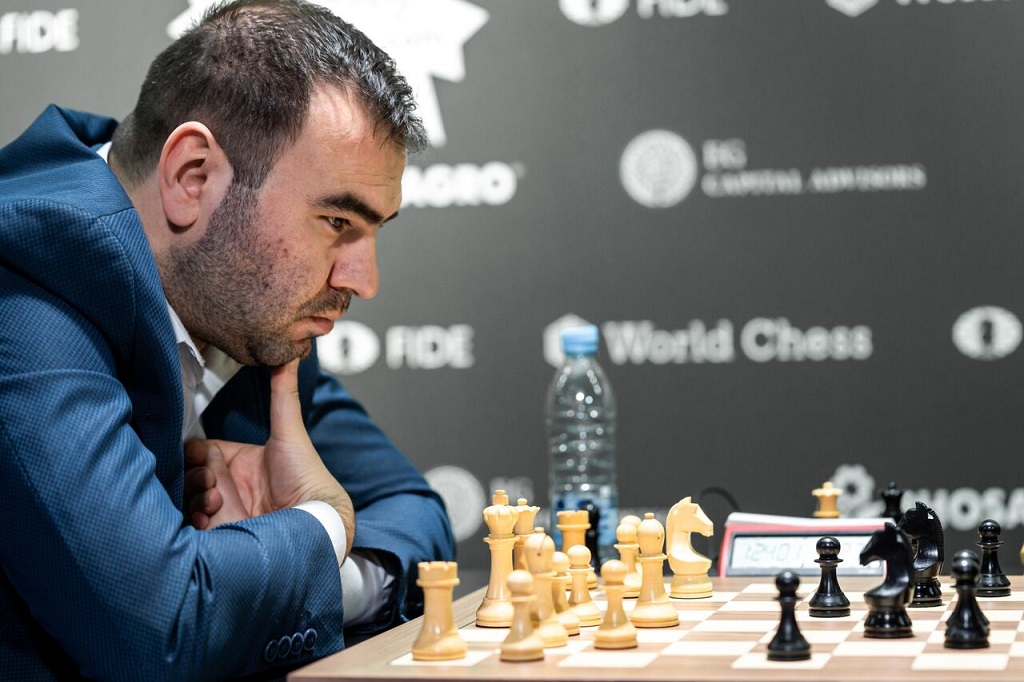
Shakhriyar Mamedyarov felt he could have gotten more from his advantageous position | Photo: Niki Riga / World Chess
In Wesley So v Pentala Harikrishna, out of an Italian Opening, the Indian ace decided to give up a piece for the attack in the middlegame:
My Black Secrets in the Modern Italian
The Italian Game is considered a sound but quiet opening without early trades, giving rise to rich positions where plans are more important than forced variations. So shows black's plans on this DVD.
Black has both knights on the kingside and a rook on the sixth rank ready to create havoc around White's king — therefore, 25...♞gf4. After almost ten minutes, So decided to take the challenge with 26.gxf4 and the nature of the struggle was settled for the rest of the game: White would continue to develop his initiative on the queenside while Black tried to mate the opposite king.
While defending his monarch, the American gave up his queen for a rook and a knight. So also had a dangerous passer on the a-file, which gave him more than enough counterplay. The computer thought White was winning, but the ever-resourceful Harikrishna manoeuvred his queen skilfully until provoking a couple of inaccuracies from his rival. The draw was signed after 45 moves.

Two gentlemen — Wesley So and Pentala Harikrishna | Photo: Niki Riga / World Chess
The shortest draw of the day was seen in Sergey Karjakin v Anish Giri, who went for the Berlin Defence. Meanwhile, Levon Aronian and Hikaru Nakamura got slight pulls out of the opening — against Yu Yangyi and Veselin Topalov, respectively — but could not turn them into anything significant later on.
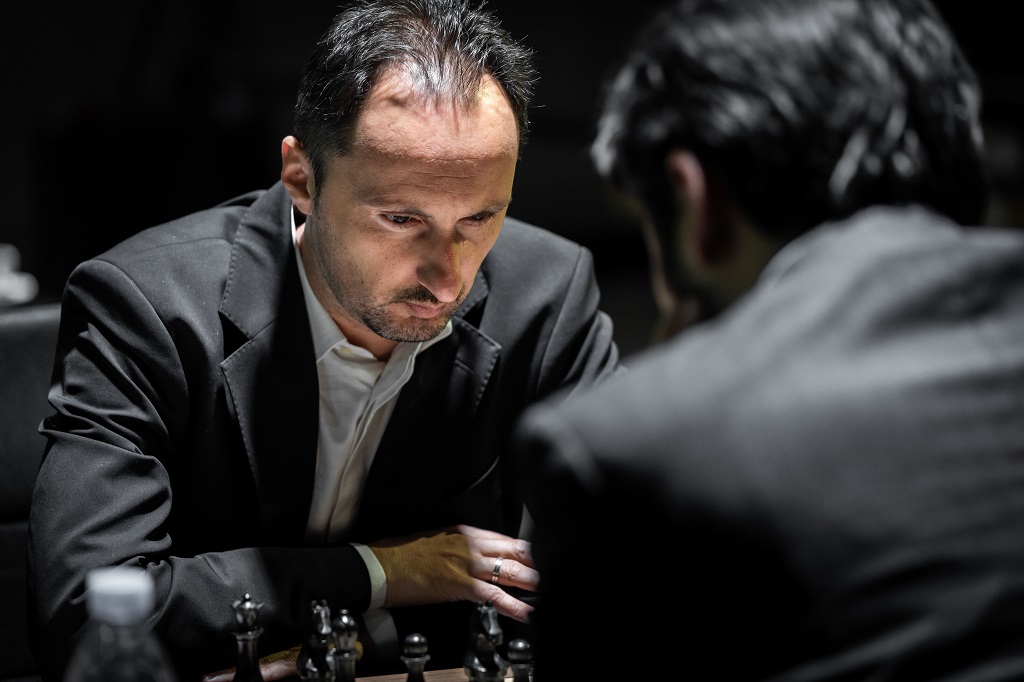
Former world champion Veselin Topalov is making his debut at this year's Grand Prix | Photo: Niki Riga / World Chess
Commentary by GM Evgeny Miroshnichenko & WGM Dana Reizniece-Ozola